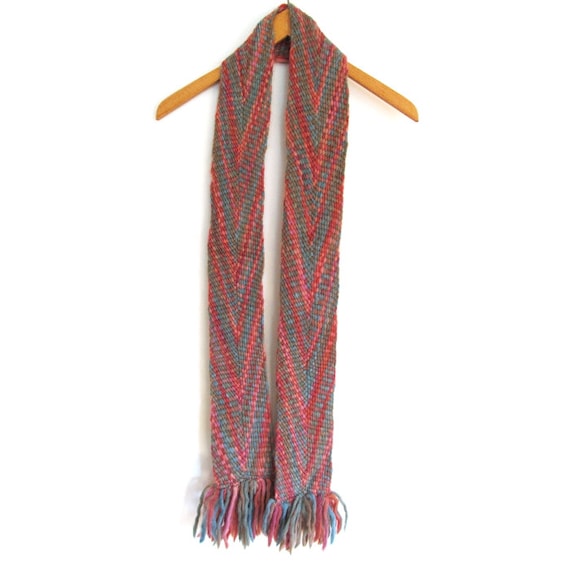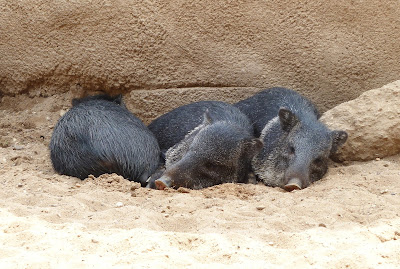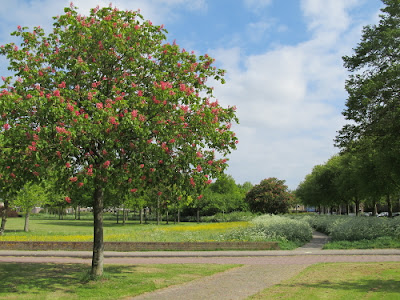Tour Canada: British Columbia
We did a loop through southern Alberta and British Columbia, beginning with Banff National Park. I will confess, I didn't much enjoy the tourist trap aspect of Banff and we moved on pretty quickly. It was a relief to come to Glacier National Park (not to be confused with Montana's Glacier NP), which had both beautiful scenery and less crowds.
 |
| The scenery includes dramatic waterfalls flowing down mountain-sides. |
One of the rangers described Glacier as the "forgotten" national park. Parks such as Banff began drawing crowds with development by the railroads and the construction of famous hotels such as Chateau Lake Louise and Banff Springs Hotel to receive the tourists coming by train. These hotels and other tourist services are still thriving for current visitors to enjoy.
Glacier began in much the same way, but in contrast to the continual development of other parks, Glacier had lost its rail service and grand hotel by the mid-1920s. The park is located at Rogers Pass, the original route the Canadian Pacific Railway Company used to cross the Columbia Mountains. Near the summit the railroad built Glacier House, a place for passengers to stop for a hot meal, warm bed, and to stretch their legs with a guided hike towards Illecillewaet Glacier. However, the pass was an ongoing struggle against avalanches that buried the tracks. Finally, in March of 1910, a tragedy occurred: 58 men who were clearing the tracks of an avalanche were struck by a second slide. There was only one survivor.
Canadian Pacific finally made up it's mind to abandon the surface route over Roger's Pass and instead dug a tunnel under the mountains. With this by-pass, Glacier House faded and in 1925 closed its doors forever.
 |
| A few trestles still stand from the railroad. |
The park was pretty quiet until the 1960s, when the Trans-Canada Highway was completed over Roger's Pass. People began visiting the park again to find the ruins of Glacier House reclaimed by nature. Today there is a short interpretive loop to explore a few remaining basements and foundations. However, the tourist industry never returned to the park and as a result, visitors today have many opportunities to enjoy the peaceful natural beauty of the area.
 |
| All that remains of the Glacier House. |
We decided to explore a few of the park's trails. We particularly enjoyed the Asulkan Valley. The hike is rated as "moderate" but it would be more accurate to say the trail starts off with an easy walk along a stream and ends with a strenuous climb up glacial moraine. The distance one-way is just under 7km (4.3 miles) with an 869m (2,851 ft) elevation gain.
 |
| A pleasant stroll along the stream. |
The stream meanders through forests and alpine meadows dotted by wildflowers and busy butterflies. Rugged peaks provide a dramatic backdrop.
As you start to climb you can look back for a view of the valley towards Roger's Pass. After about 4km the trail steepens significantly and you ascend towards the snowy peaks.
 |
| View towards Roger's Pass. |
At the end of the trail you find yourself facing the Asulkan Glacier. There is also a cabin here that can be reserved.
 |
| Asulkan Glacier. |
The vegetation is sparse on top, but a few determined wildflowers hold on in the steady wind.
 |
| Wildflowers peek out between the rocks. |
The next day we stopped at the Roger's Pass Visitor Center and tried to spot where we climbed. We could just make it out in the distance!
 |
| Right about there... |
THE FACTS
Location: East of Revelstoke, BC
Website
Entrance Fee: You must purchase a National Parks Pass from the Roger's Pass Visitor Center or one of the Ranger Huts found in the park.
Season: Day use areas and trails open from snow-melt (June/July) to first snow (Oct). Ski season November-April; some areas are restricted during winter and require a special permit due to avalanche control.
Accommodations: Camping is available in the park, as well as a few back-country cabins. Hotels are located in Revelstoke, about an hour west of the visitor center.
























































